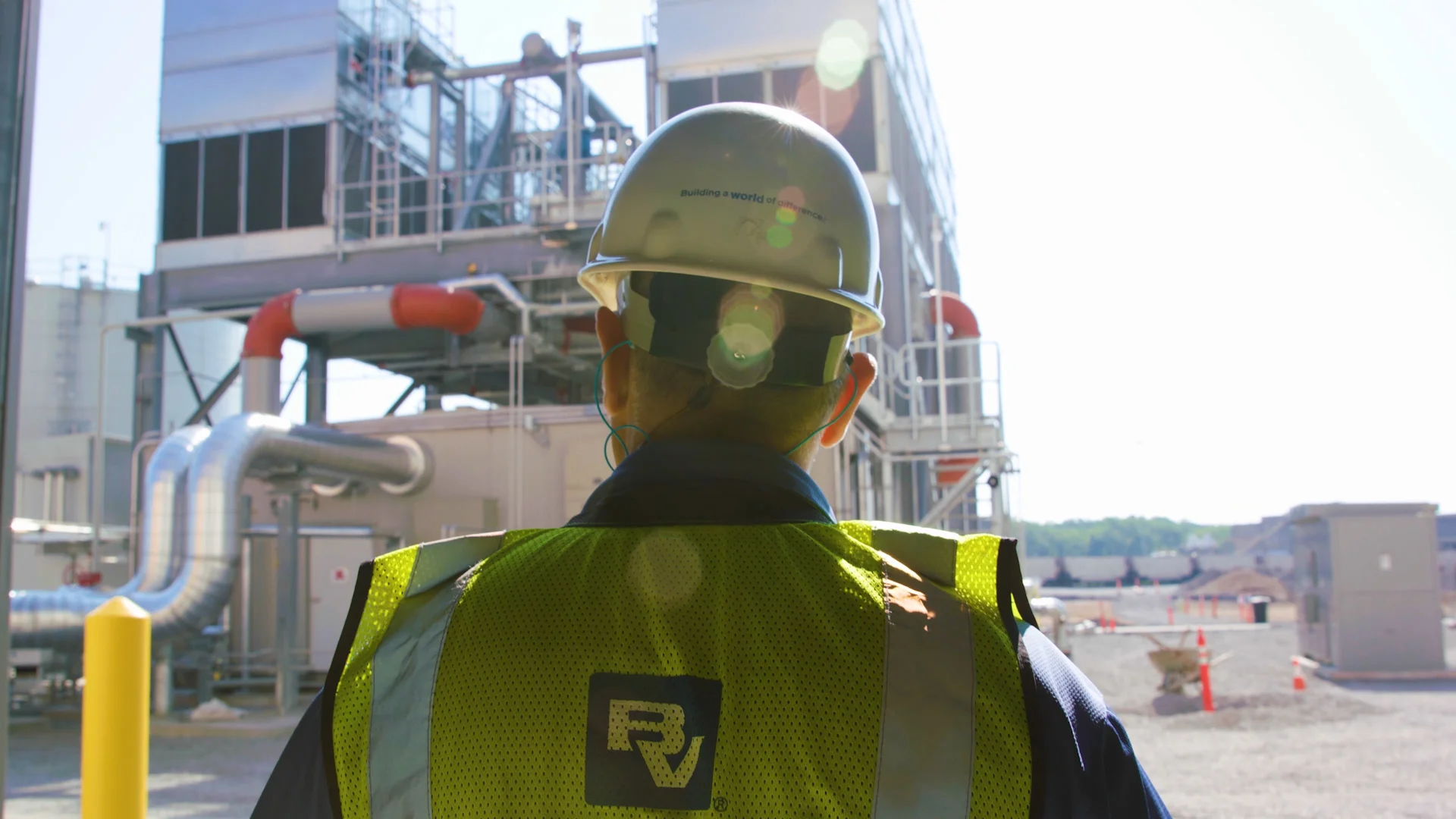
Water contamination: challenges and solutions
A complex issue requiring careful navigation
Water and wastewater utilities are facing a myriad of often conflicting challenges when it comes to water contamination issues. Per- and polyfluoroalkyl substances (PFAS) — along with lead and copper — are top of mind due to stringent regulations. Nitrogen, phosphorous, pharmaceuticals, personal care products (PPCPs) and other contaminants also may pose a concern for utilities and their communities.
Based on data from a survey of 680 U.S. water sector stakeholders, the Black & Veatch 2025 Water Report analyzes the driving complexities, challenges and solutions as utilities move forward with managing water contaminants.
PFAS in drinking water: NPDWR significantly impacts utilities
In April 2024, the U.S. Environmental Protection Agency (EPA) announced the final National Primary Drinking Water Rule (NPDWR) regulating six PFAS, commonly known as “forever chemicals.” Under this regulation, utilities must test for, report on and mitigate PFAS contamination if present in levels that exceed the set-forth maximum contaminant levels (MCLs).
Since the announcement, drinking water utilities have been navigating its implications. Nearly half of survey respondents (46%) report that PFAS have been detected in their water supply (Figure 8), with most currently exploring treatment options. To address PFAS contamination, the majority of respondents in a separate question (68%) say their utility plans to pursue a main treatment plant upgrade.
While the EPA’s move will reduce exposure to harmful PFAS chemicals nationwide, it also comes with a hefty price tag. A study conducted by Black & Veatch on behalf of the American Water Works Association (AWWA) estimated the national cost for water systems to install and operate treatment to remove perfluorooctanoic acid (PFOA) and perfluorooctanesulfonic acid (PFOS) to MCL levels exceeds $3.2 billion annually. In response to the proposed rule in 2023, the AWWA predicted in a statement that “the vast majority of these treatment costs will be borne by communities and ratepayers, who are also facing increased costs to address other needs, such as replacing lead service lines, upgrading cybersecurity, replacing aging infrastructure and assuring sustainable water supplies.”
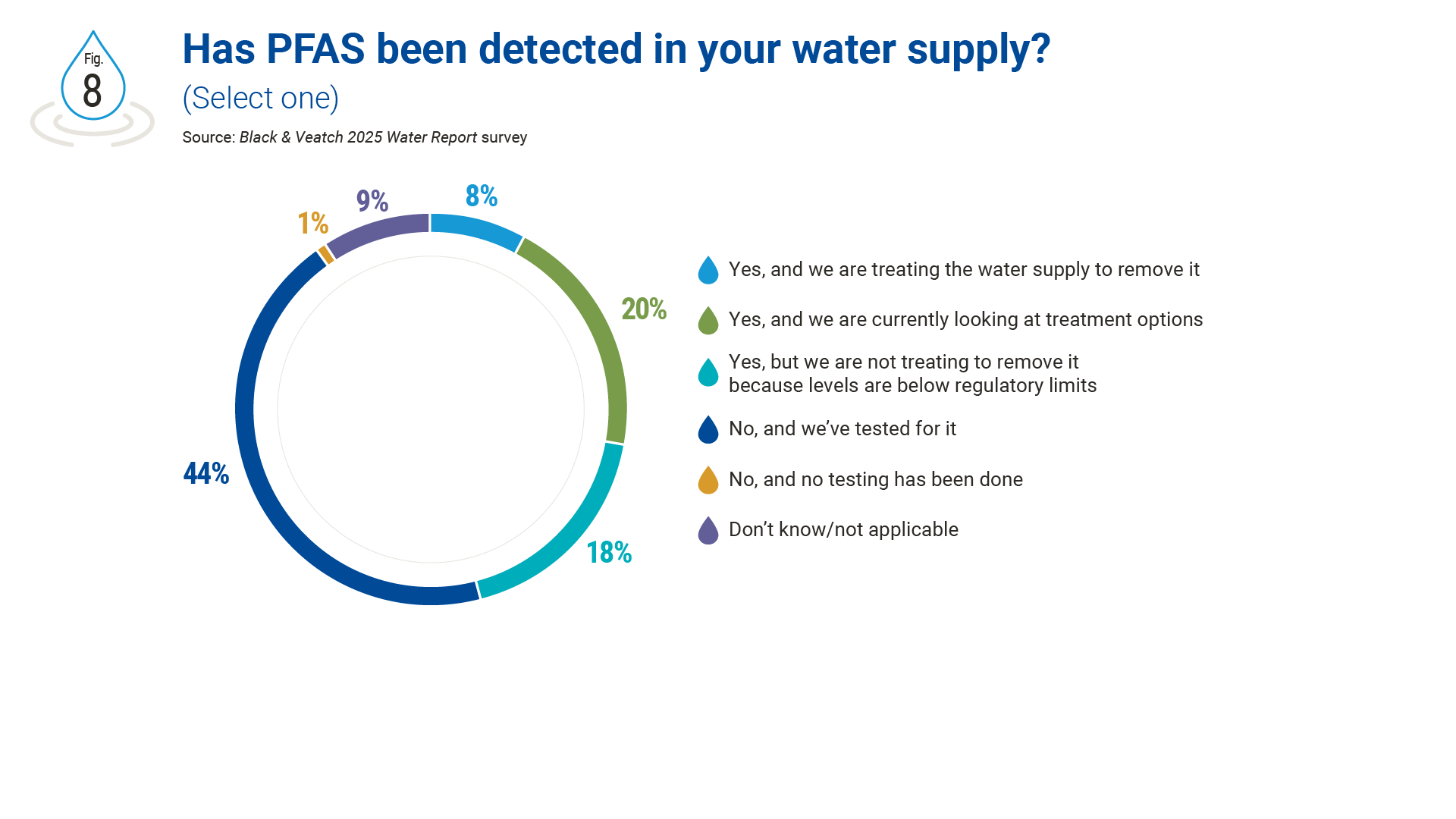
This prediction has proven accurate according to survey responses for this report. When asked how compliance expenditures have impacted their organizations, 51% cited “raised rates” as the top answer, followed by “delays of infrastructure projects” at 35%. It’s clear that these compliance costs are being pushed into rates, directly affecting customers, as well as impacting other priorities that are being deferred or canceled because of the PFAS compliance burden (Figure 9). While mitigating harmful PFAS contamination is a crucial priority, utilities undoubtedly are feeling the squeeze.
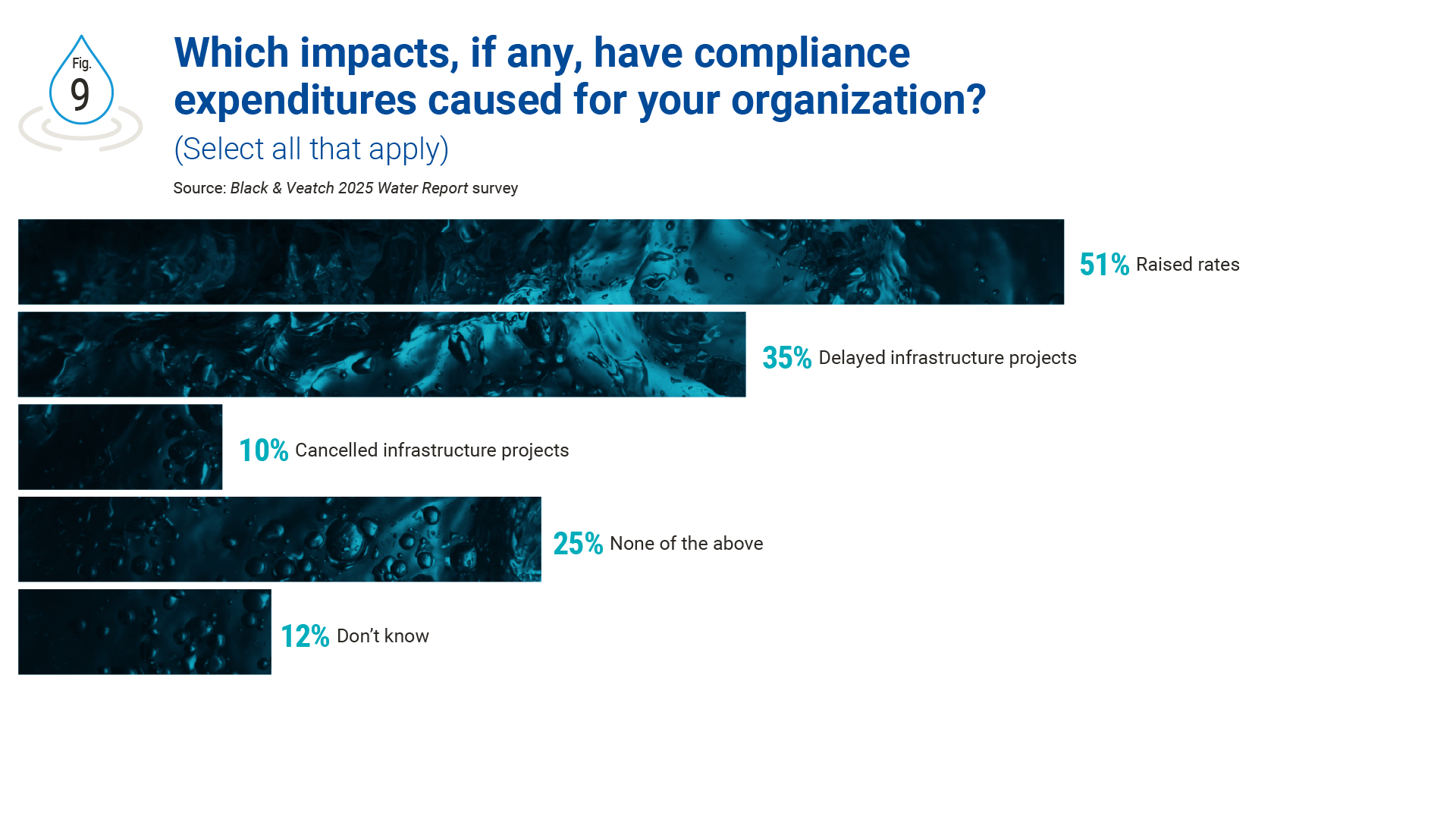
PFAS in wastewater, biosolids: Uncertainty continues
While drinking water regulations for PFAS are now more defined, the federal regulatory status of biosolids and wastewater PFAS remains uncertain. New rules are expected to be revisited, such as the designation of PFOA and PFOS as hazardous substances under the Comprehensive Environmental Response, Compensation, and Liability Act (CERCLA), and some proposed rules have been withdrawn such as the EPA’s proposed limited on PFAS chemicals in industrial discharges. The EPA release of the Draft Sewage Sludge Risk Assessment for PFOA and PFOS for biosolids, while not a regulation, is viewed as a step in that direction, although the pace and magnitude of rule changes (if any) are in question.
In the absence of federal direction, states are forging ahead with their own PFAS reduction approaches. Some states have proposed or enacted PFAS regulations for biosolids, ranging from strategies tying biosolids quality and requirements to industrial discharge controls, to soil or biosolids concentration limits and even land application bans.
Additionally, California, North Carolina and many other states have started implementing PFAS monitoring requirements in their NPDES (National Pollutant Discharge Elimination System) permits (in line with EPA recommendations). This move to monitor PFAS puts communities in a stronger position to respond to potential future regulations and implement source control programs to identify and stop PFAS contamination at its source. Nearly six in 10 respondents (58%) report that they have tested their Water Resource Recovery Facility (WRRF) influent, effluent or biosolids for PFAS content. Additionally, 30% of survey respondents said their organization is using an industrial pretreatment program/source control method to address PFAS concerns, while 23% said they were employing new treatment processes and 8% are pursuing regulations to minimize PFAS in production. Wastewater utilities should consider combining multiple approaches to holistically manage their PFAS challenges (Figure 10).
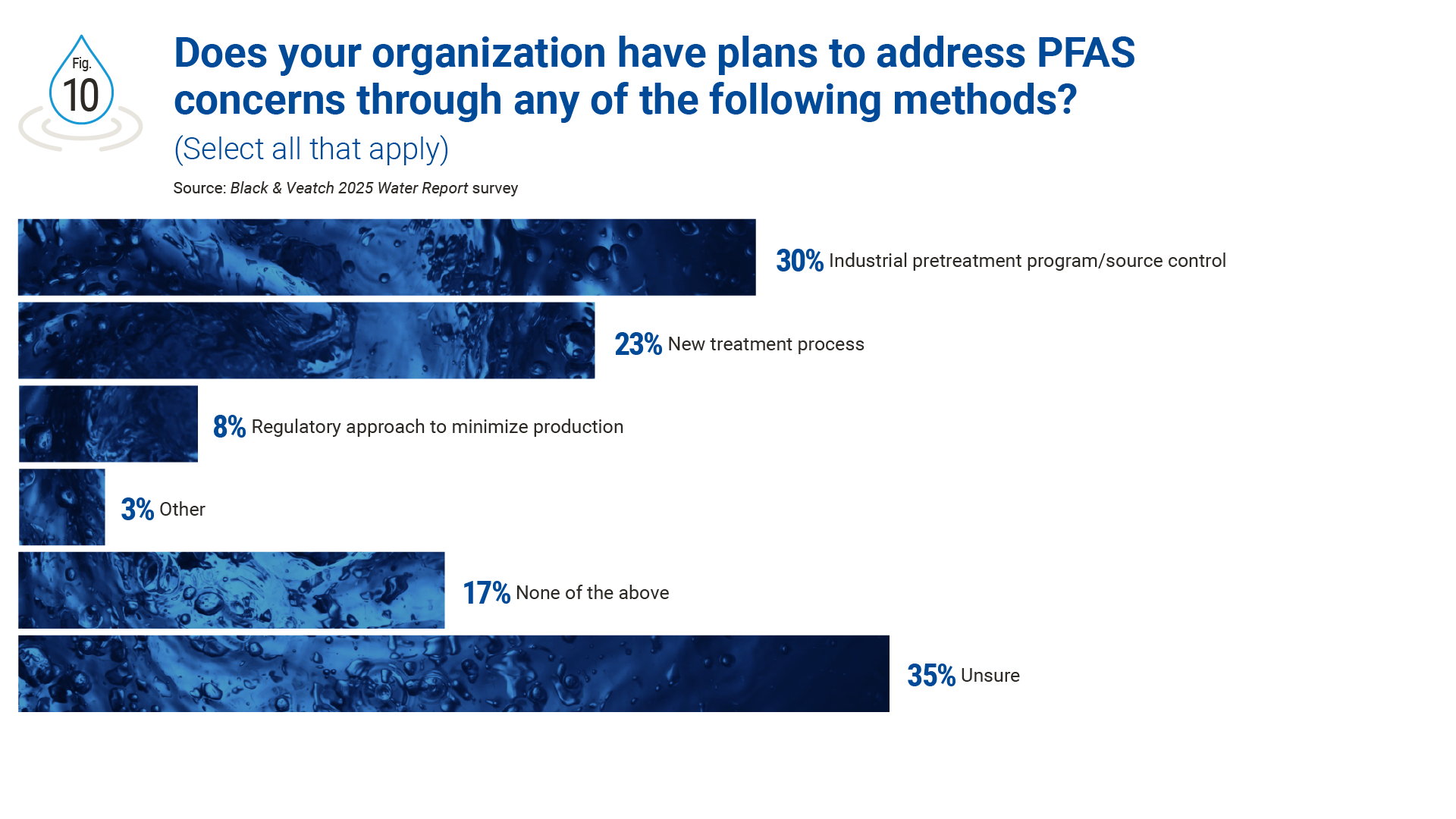
Lead and copper rule: Utilities make progress
For the first time, utilities are contending with three overlapping regulations — the Lead and Copper Rule (LCR), Lead and Copper Rule Revisions (LCRR) and Lead and Copper Rule Improvements (LCRI) — to address these contaminants in the public drinking water supply.
The latest LCRI outlined more rigorous requirements for homeowner outreach, which was felt by survey respondents. When asked what their biggest challenges were related to compliance, 41% pointed to “homeowner response to communications,” with 31% citing “approval to access private property.”
One-third of respondents cited “staffing availability,” aligning with a seven percentage point increase from 2024 in respondents planning to have an outside consultant manage lead service line replacements (Figure 11).
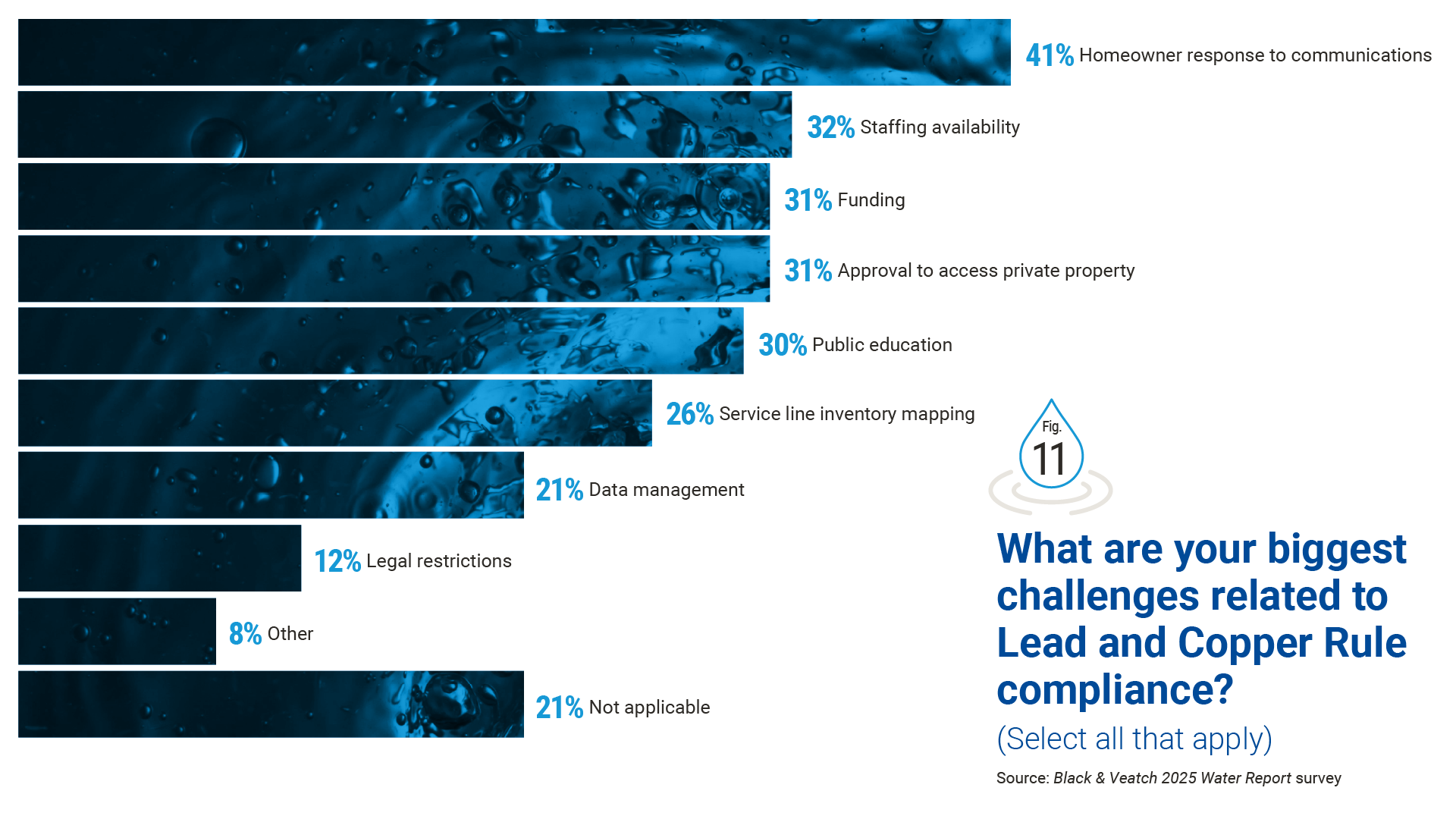
Despite these challenges, there’s a positive trend toward using predictive modeling. Half of respondents (51%) say they plan to use predictive modeling to estimate their remaining unknown service line materials. This proactive approach not only helps utilities plan their work more effectively but also enhances transparency and safety for customers. By adopting these advanced methods, utilities are better equipped to address potential risks and ensure the safety of the public drinking water supply.
Navigating contaminants amidst a complex landscape
In conclusion, water and wastewater utilities are navigating a complex landscape of regulatory requirements and contamination challenges. The introduction of new PFAS regulations has placed significant financial and operational burdens on utilities, compelling them to raise rates and delay other critical infrastructure projects as they work to assess and mitigate PFAS in the water supply. Meanwhile, the uncertainty surrounding PFAS regulations in wastewater and biosolids, coupled with state-level initiatives, adds another layer of complexity.
Utilities continue to address lead contamination in addressing lead contamination through innovative approaches such as predictive modeling. As they continue to adapt and innovate, utilities remain committed to ensuring the safety and sustainability of public water supplies for their communities.
Contact Us
Looking for a partner in innovation?
Let's Talk